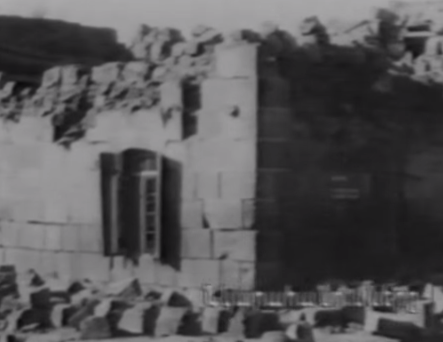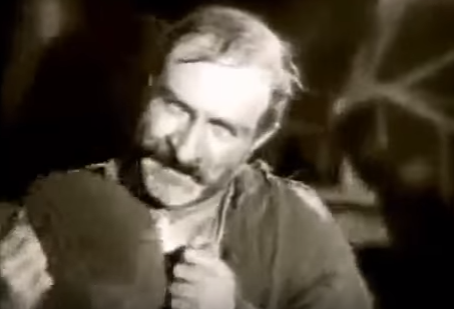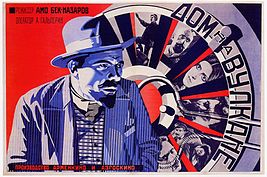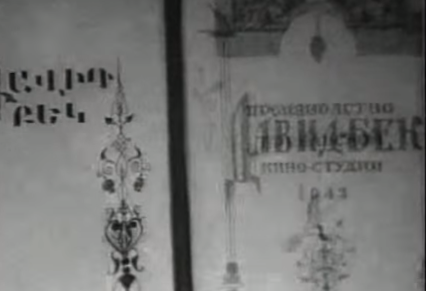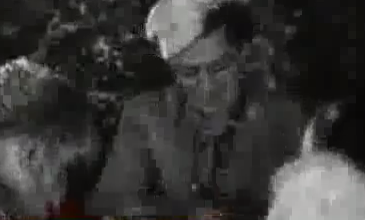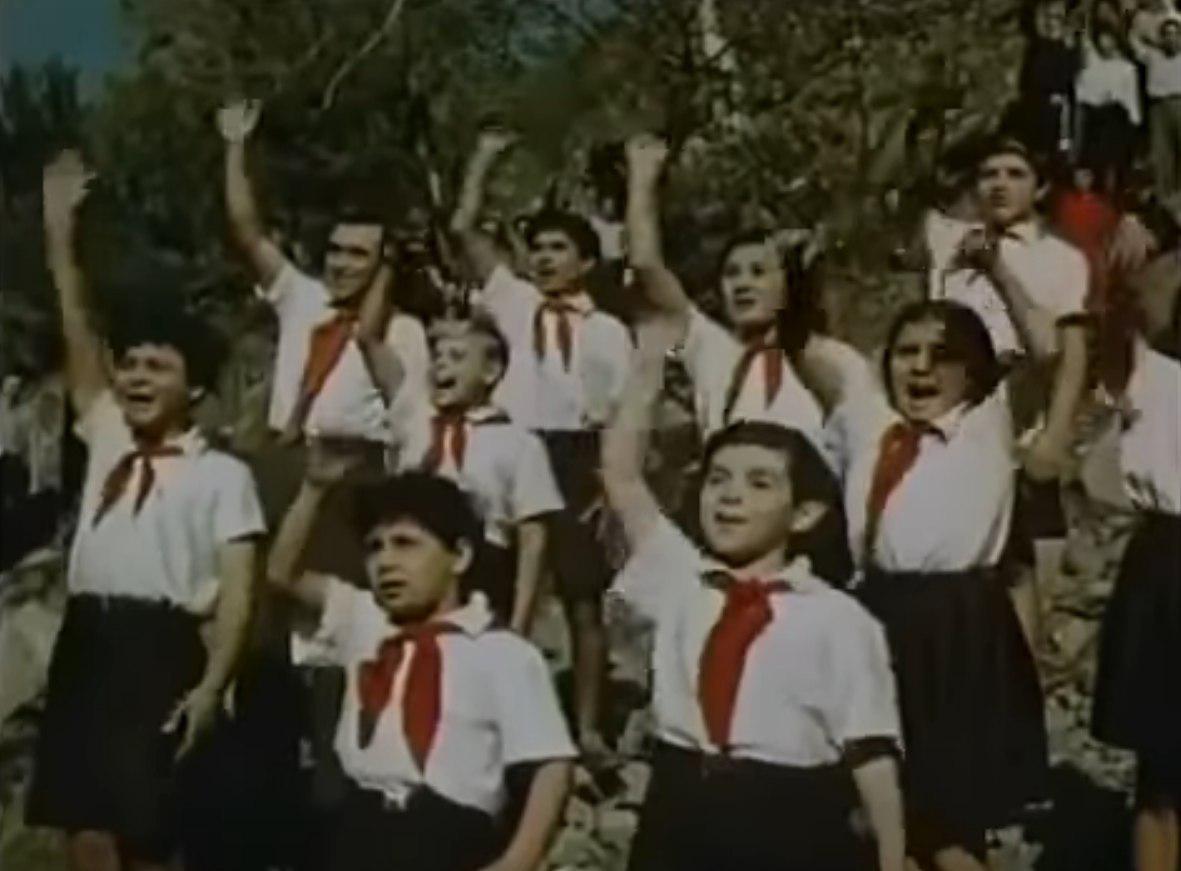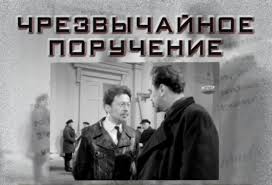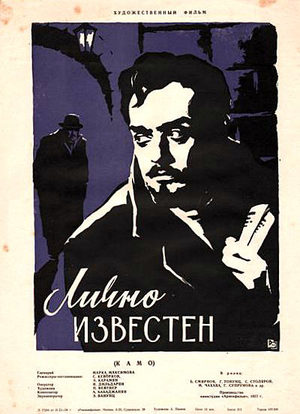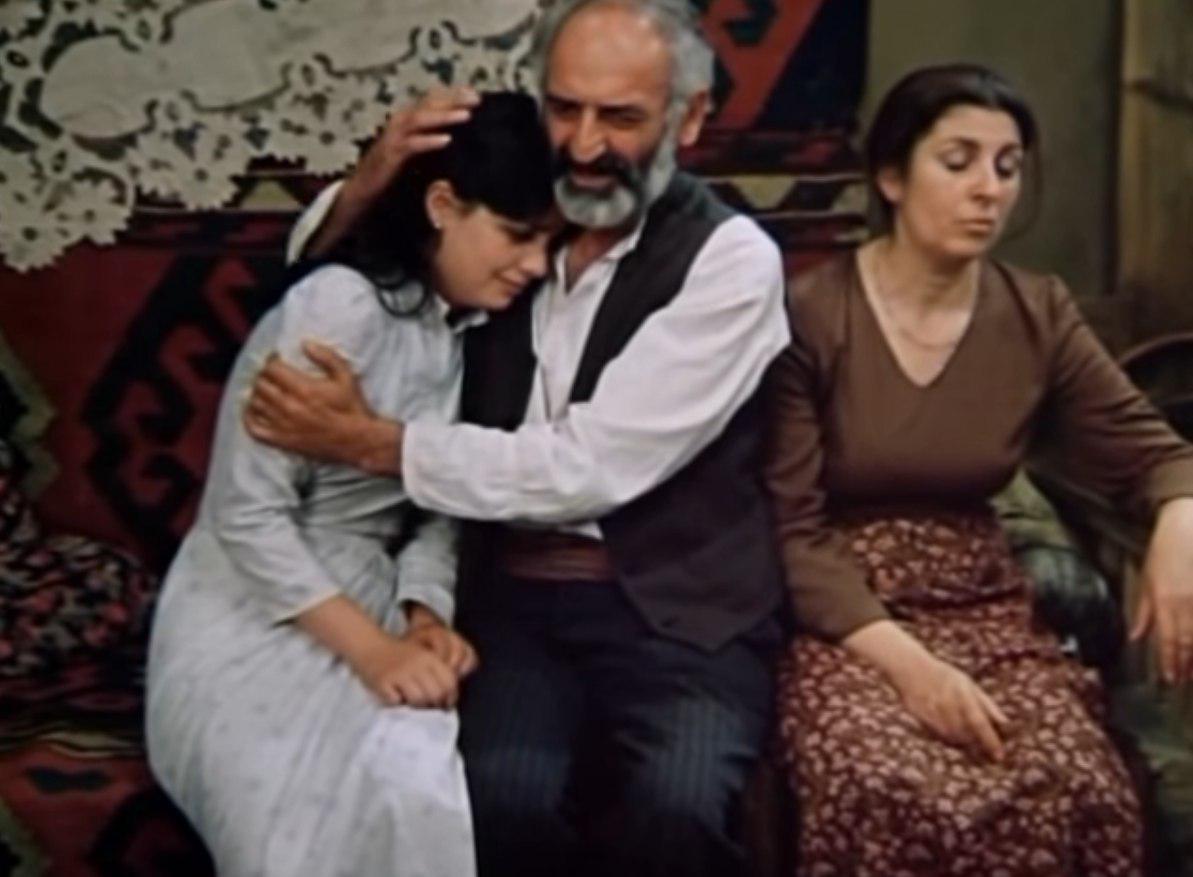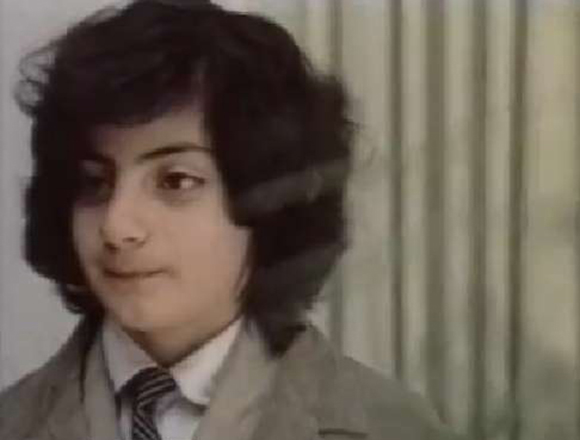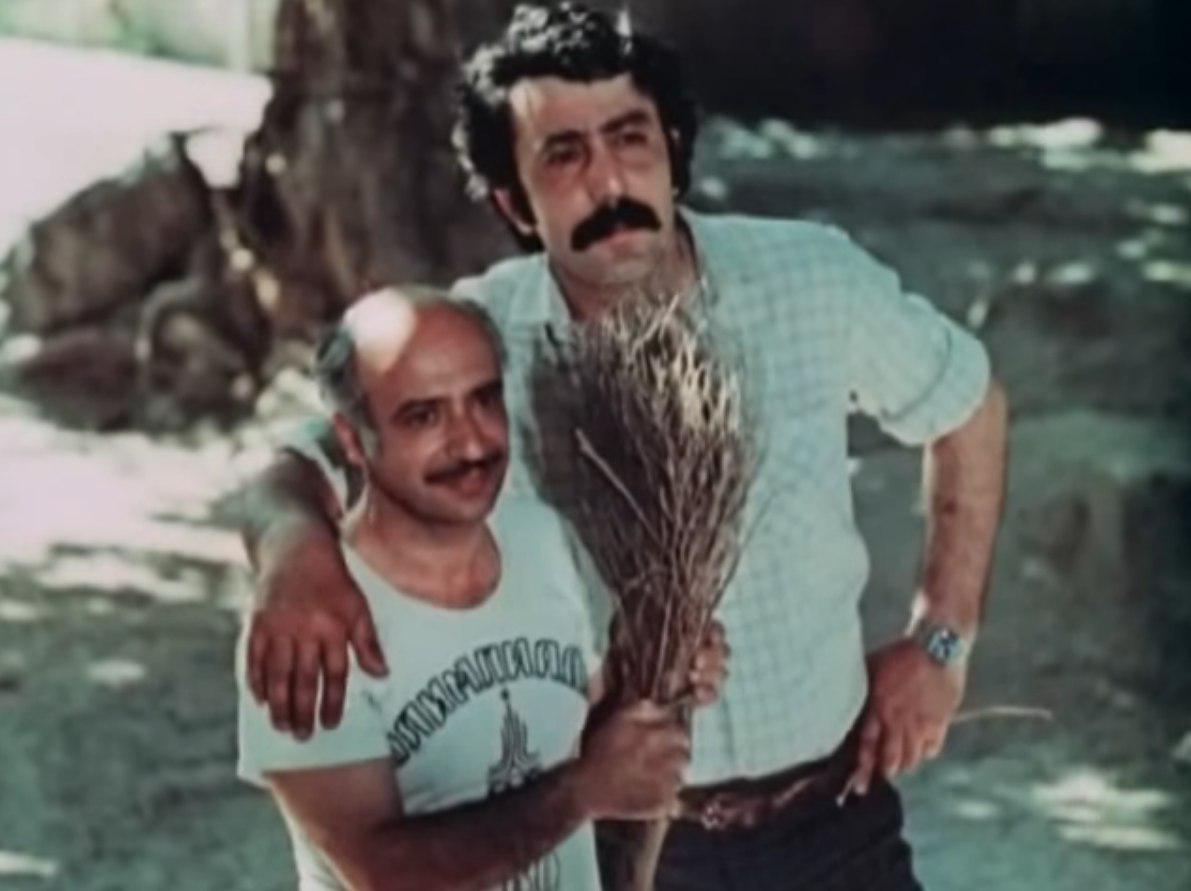....
История армянского кино
Эпоха немого кино
..
The history of the Armenian cinema
The era of silent movies
..
Հայ կինոյի պատմություն
Համր ֆիլմերի դարաշրջան
....
....
Начало XX века, запечатленное на кинопленку
..
The beginning of the XX century, recorded on cine-film
..
XX դարի սկիզբը՝ նկարահանված կինոժապավենի վրա
....
....
До установления советской власти в 1920 году киносъемки в Армении носили случайный характер.
..
Prior to the establishment of Soviet power in 1920, filming in Armenia was of an accidental nature.
..
Մինչև 1920 թվականին Հայաստանում խորհրդային իշխանության հաստատումը կինոնկարահանումները կամայական բնույթ էին կրում:
....
....
Первые съемки относятся к 1907 году. Были запечатлены похороны Католикоса всех армян Мкртича Хримяна.
В годы Первой мировой войны хроникеры снимали отдельные эпизоды боев на Кавказском фронте, трагические события жестокой расправы турецких властей с армянским населением, эвакуацию армян в Россию.
В 1918 году режиссер И.Н. Перестиани по сценарию В.К. Папазяна и Ц. Лакка осуществил на киностудии А.А. Ханжонкова первую экранизацию романа Александра Ширванзаде «Намус» (фильм вышел под названием «Связанная клятвой»).
В 1920 году оператор А.Г. Лемберг запечатлел события, связанные с установлением Советской власти в Армении: часть этого материала легла в основу фильма «Вступление Красной Армии в Ереван».
..
The first filmings date back to 1907. The funeral of the Catholicos of All Armenians Mkrtich Khrimyan was recorded.
During the First World War, chroniclers shot separate episodes of fighting scenes on the Caucasian front, the tragic events of the brutal massacre conducted by the Turkish authorities toward the Armenian population, also, the evacuation of the Armenians to Russia.
In 1918 the director I.N. Perestiani, according to the scenario by Papazyan and Lakka shot the first screen version of Alexander Shirvanzade's novel «Namus» (the film was released under the title «Bound by Oath») at the A. A. Khanzhonkov's film studio.
In 1920, the operator A.G. Lemberg captured the events, connected with the establishment of Soviet power in Armenia: some of this material formed the basis of the film «The entry of the Red Army into Yerevan».
..
Առաջին ֆիլմի նկարահանումը տեղի է ունեցել 1907թվականին, երբ նկարահանվեց Ամենայն Հայոց կաթողիկոս Մկրտիչ Խրիմյանի թաղման արարողությունը:
Առաջին աշխարհամարտի տարիներին քրոնիկները նկարում էին Կովկասյան ճակատում մղվող մարտերի առանձին դրվագներ, թուրքական իշխանությունների կատարած հանցագործությունները հայ ժողովրդի նկատմամբ, հայերի էվակուացիան Ռուսաստան:
1918 թվականին ռեժիսոր Պերեստիանին Փափազյանի և Լակկի սցենարի հիման վրա Խանժոնկովի կինոստուդիայում իրականացրեց Ալեքսանդր Շիրվանզադեի «Նամուս» վեպի առաջին էկրանավորումը (ֆիլմը դուրս եկավ «Երդումով կապվածը» անվանումով):
1920 թվականին օպերատոր Լեմբերգը նկարահանեց Հայաստանում խորհրդային իշխանության հաստատման հետ կապված իրադարձությունները: Այդ նյութի մի մասը հետագայում դրվեց «Կարմիր բանակի մուտքը Երևան» ֆիլմի հիմքում:
....
....
Рождение армянского кино
..
Birth of Armenian cinema
..
Հայ կինոյի ծնունդը
....
....
16 апреля 1923 года декретом Совнаркома Армянской ССР было принято решение о создании Госкино Армении, во главе которого были поставлены Даниел Дзнуни и Амо Бекназарян. Началось создание собственной кинопромышленности.
..
On April 16 in 1923, by decree of the Council of People's Commissars of the Armenian SSR, a decision was made to create the Armenian Film State Committee, which was headed by Daniel Dznuni and Hamo Beknazaryan. The creation of our own film industry began.
..
1923 թվականի ապրիլի 16-ին Հայկական ԽՍՀ ժողովրդական կոմիսարիատի դեկրետով Հայֆիլմի ստեղծման վերաբերյալ որոշում կայացվեց: Դրա ղեկավարներ նշանակվեցին Դանիել Դզնունին և Համո Բեկնազարյանը: Սկիզբ դրվեց սեփական կինոարտադրությանը:
....
....
Становлению и развитию национального кино способствовала тесная связь ее мастеров с деятелями кинематографий других советских республик. Армянские кинематографисты творчески восприняли новаторские устремления Сергея Эйзенштейна, Всеволода Пудовкина, Александра Довженко, их поиски революционного пути развития киноискусства. В армянском кино работала большая группа актеров театра, писателей. Это обстоятельство в условиях общего роста национальной культуры привело к значительным успехам национального киноискусства.
В апреле 1924 года в Ереване была организована кинолаборатория. На базе этой лаборатории (впоследствии киностудия «Арменфильм» имени А. Бек-Назарова) в 1924 году был создан первенец национального советского киноискусства — документальный фильм «Советская Армения».
..
Formation and development of the national cinema was conditioned by close connection of its masters with figures of cinematography of other Soviet republics. The Armenian cinematographers creatively perceived the innovative aspirations of Sergey Eisenstein, Vsevolod Pudovkin, Alexander Dovzhenko, and their search for a revolutionary way to develop filmmaking. A large group of theater actors and writers worked in the Armenian cinema. This circumstance in the conditions of the overall growth of the national culture has led to significant successes of the national cinema art.
In April 1924 a cinema laboratory was organized in Yerevan. Based on this laboratory (later the film studio «Armenfilm» named after H. Bek-Nazarov), in 1924 the first national Soviet cinema art sample - the documentary film «Soviet Armenia» was created.
..
Ազգային կինոյի կայացմանը և զարգացմանը նպաստում էին նրա վարպետների սերտ կապերը խորհրդային մյուս հանրապետությունների կինեմատոգրաֆի գործիչների հետ: Հայ կինեմատոգրաֆիստները ստեղծագործորեն էին ընկալում Սերգեյ Էյզենշտեյնի, Վսեվոլոդ Պուդովկինի, Ալեքսանդր Դովժենկոյի նորարարական ձգտումները, կինոարվեստի զարգացման հեղափոխական ուղու նրանց որոնումները: Հայկական կինոյի ասպարեզում աշխատում էր թատրոնի դերասանների, գրողների մեծ խումբ: Ազգային մշակութային վերելքի պայմաններում այս հանգամանքը հանգեցրեց ազգային կինոարվեստի ոլորտում զգալի հաջողությունների:
1924 թվականի ապրիլին Երևանում կազմավորվեց կինոլաբորատորիա (ավելի ուշ՝ Հ. Բեկնազարյանի անվան «Հայֆիլմ»), որի շրջանակներում հետագայում ստեղծվեց ազգային կինոարվեստի առաջնեկը՝ «Խորհրդային Հայաստան» վավերագրական ֆիլմը:
....
....
Появление звукового кино
..
The sound film emerging
..
Հնչյունային ֆիլմի ստեղծումը
....
....
Довоенные годы, годы Великой Отечественной войны
..
Pre-war years and the years of the Great Patriotic War
..
Մինչպատերազմյան և Երկրորդ աշխարհամարտի տարիներ
....
....
1935 год вошел в историю мирового кино — как год выхода на экраны первого цветного фильма «Бекки Шарп» (первый в мире полнометражный фильм в цвете). Это была экранизация романа Уильяма Теккерея «Ярмарка тщеславия» американского режиссера армянского происхождения Рубена Мамуляна.
..
In the history of world cinema 1935 was the year of the first color film «Becky Sharp» (the world's first full-length film in color) release. It was a screen version of the novel by William Thackeray «Vanity Fair» by American director of Armenian origin Ruben Mamulyan.
..
1935 թվականը համաշխարհային կինոյի պատմության մեջ մտավ որպես առաջին լիամետրաժ գունավոր ֆիլմի՝ «Բեքքի Շարփ»-ի նկարահանման տարի: Դա Ուիլյամ Թեքերեյի «Սնափառության տոնավաճառ» վեպի՝ ամերիկահայ ռեժիսոր Ռուբեն Մամուլյանի էկրանավորումն էր:
....
....
Рубен Мамулян, режиссер театра и кино, первый постановщик многих пьес Юджина О’Нила. В Голливуде он работал с конца 1920-х годов. В его фильмах блистали такие звёзды, как Марлен Дитрих, Грета Гарбо, Морис Шевалье.
1935 год в истории армянского кино ознаменовался появлением звука. Первый звуковой армянский фильм «Пэпо» (по пьесе Габриела Сундукяна, 1935, режиссер Бек-Назаров, текст песен Е.С. Чаренца, музыка А.И. Хачатуряна), вошедший в золотой фонд многонационального советского киноискусства, подвёл итоги развития армянского кино, открыл новую страницу его истории и знаменовал собой более зрелый этап содружества кино с другими видами искусства.
Во второй половине 30-х годов выпускались главным образом историко-революционные ленты. Лучшим фильмом этих лет стала лента Бек-Назарова «Зангезур» (1938).
В годы Великой Отечественной войны были созданы короткометражные игровые фильмы о человеческих судьбах «Дочка» (1942, режиссер Бек-Назаров) и «Жена гвардейца» (1943, режиссер Бархударян). В 1944 году Бек-Назаров завершил работу над историческим фильмом «Давид Бек», проникнутым пафосом патриотизма...
..
Ruben Mamulyan, director of theater and cinema, the first director of many plays by Eugene O'Neill, worked in Hollywood since the late 1920's. In his films, stars such as Marlene Dietrich, Greta Garbo, and Maurice Chevalier shone.
In the history of Armenian cinema 1935 was also marked by the appearance of sound films. The first Armenian sound film «Pepo» (based on Gabriel Sundukyan's play, 1935, the director Bek-Nazarov, lyrics by Eghishe Charents, music by Aram Khachaturyan) entered the golden fund of multinational Soviet cinema art, summed up the development of Armenian cinema and opened a new page in its history and marked a more mature stage of cooperation between cinema and other kinds of art.
In the second half of the 1930s, mainly historical and revolutionary films were produced. The most remarkable film of these years was Bek-Nazarov's «Zangezur» (1938).
During the Great Patriotic War, short feature films about the human destinies were created– «Daughter» (1942, director Bek-Nazarov) and «The Guardsman's Wife» (1943, directed by Barkhudaryan). In 1944, Bek-Nazarov completed work on the historical film «David Bek», imbued with the pathos of patriotism.
..
Ռուբեն Մամուլյանը թատրոնի և կինոյի ռեժիսոր էր, Յուջին Օ'Նիլի բազմաթիվ պիեսների բեմադրող: Հոլիվուդում նա աշխատել է 1920-ականների վերջից: Նրա ֆիլմերում փայլել են այնպիսի ասղտեր, ինչպիսիք են Մառլեն Դիտրիխը, Գրետա Գարբոն, Մորիս Շևալյեն:
Հայ կինոյի պատմության մեջ ևս 1935 թվականը նշանավորվեց այդ տեսանկյունից. ստեղծվեց առաջին հնչյունային ֆիլմը՝ «Պեպո»-ն (Գաբրիել Սունդուկյանի համանուն պիեսի հիման վրա, 1935, ռեժիսոր՝ Բեկնազարյան, երգերի բառերը՝ Եղիշե Չարենցի, երաժշտությունը՝ Արամ Խաչատրյանի): Այն ընդգրկվեց խորհրդային բազմազգ կինոարվեստի ոսկե շտեմարանում, նոր էջ բացեց հայ կինոյի պատմության մեջ և կապեց կինոարվեստը արվեստի այլ ուղղությունների հետ:
1930-ականների երկրորդ կեսին ստեղծվում էին գլխավորապես պատմական և հեղափոխական թեմաներով ֆիլմեր: Այս շրջանի լավագույն ֆիլմերից է Համո Բեկնազարյանի «Զանգեզուր»-ը (1938):
Հայրենական պատերազմի տարիներին մարդկային ճակատագրերի մասին կարճամետրաժ ֆիլմեր էին ստեղծվում՝ «Դուստրը» (1942, ռեժիսոր՝ Բեկնազարյան), «Գվարդիականի կինը» (1943, ռեժիսոր՝ Բարխուդարյան): 1944 թվականին Բեկնազարյանը ավարտին հասցրեց հայրենասիրական պաթոսով տոգորված «Դավիթ Բեկ» պատմական ֆիլմի նկարահանման աշխատանքները:
....
....
Послевоенный период
..
The post-war period
..
Հետպատերազմյան շրջան
....
....
В первые послевоенные годы армянское кино переживало трудности, характерные для всей советской кинематографии.
..
In the first post-war years, Armenian cinema faced difficulties, characteristic of all Soviet cinematography of the time.
..
Հետպատերազմյան շրջանի առաջին տարիներին հայկական կինոարվեստը բախվեց ժամանակի խորհրդային ողջ կինեմատոգրաֆիային բնորոշ բազում դժվարությունների հետ:
....
....
В лучших традициях национального реалистического искусства режиссер Айартян в 1956 году осуществил экранизацию драмы Ширванзаде «Из-за чести» и в 1960 году поставил историческую эпопею «Северная радуга».
Популярностью пользовались музыкальные фильмы «Сердце поёт» (1956, режиссер Мелик-Авакян, в главной роли певец А.М. Айдинян) и «Песня первой любви» (1958, режиссер Юрий Ерзинкян и Лаэрт Вагаршян).
Среди удач тех лет — короткометражный комедийный фильм «Золотой бычок» (1956, режиссер Акопян). Полнометражной комедией «Парни музкоманды» (1960), построенной на историко-революционном материале, дебютировали режиссеры Г.С. Малян и Г.Р. Маркарян. Удачным был также дебют режиссера Армана Манаряна — короткометражная лента «Тжвжик» (1962).
В 1960-х годах выходят главные фильмы Сергея Параджанова — «Тени забытых предков» (1964) и «Цвет граната» (1968).
..
Preserving the best traditions of national realistic art, director Hayartyan performed a screen version of Shirvanzade’s drama «For honor» in 1956 and in 1960, set the historical epic «The northern rainbow».
Among the popular musical films were «The heart sings» (1956, director Melik-Avagyan, starring A.M. Aydinyan) and «First love song» (1958, director Yuri Erzinkyan and Layert Vagharshyan).
Among the most successful movies of those years was a short comic film «The Golden Bull» (1956, director Hakobyan). With the full-length comedy «Guys of the band» (1960), built on historical-revolutionary material, such directors as Malian and Markaryan debuted. The debut of director Arman Manaryan was also successful with the short film «Tzhvzhik» (1962).
In the 1960s, Sergey Paradzhanov's famous films – «Shadows of Forgotten Ancestors» (1964) and «Pomegranate Color» (1968) were created.
..
Ազգային ռեալիստական արվեստի լավագույն ավանդույթները պահպանելով՝ ռեժիսոր Հայարտյանը 1956 թ. էկրանավորեց Շիրվանզադեի «Պատվի համար» դրաման, իսկ 1960 թ. ներկայացրեց «Հյուսիսային ծիածան» պատմական էպոպեան:
Հանրահայտ երաժշտական ֆիլմերի շարքում «Սիրտն է երգում» (1956, ռեժիսոր՝ Մելիք-Ավագյան, գլխավոր դերում՝ երգիչ Այդինյան) և «Առաջին սիրո երգը» (1958, ռեժիսորներ՝ Էրզինկյան և Վաղարշյան) ֆիլմերն են:
Այդ տարիների ամենահաջող կինոնկարներից «Ոսկե ցլիկ» կարճամետրաժ ֆիլմը (1956, ռեժիսոր՝ Հակոբյան): Պատմական-հեղափոխական թեմայի վրա հիմնված «Նվագախմբի տղաները» (1960) լիամետրաժ կատակերգությամբ հանդես եկան այնպիսի ռեժիսորներ, ինչպիսիք են Մալյանը և Մարգարյանը: Ռեժիսոր Արման Մանարյանի դեբյուտը «Տժվժիկ» կարճամետրաժ ֆիլմով (1962) ևս բավականին հաջող էր:
1960-ական թվականներին ստեղծվեցին Սերգեյ Փարաջանովի հայտնի ֆիլմերը` «Մոռացված նախնիների ստվերները» (1964) և «Նռան գույնը» (1968):
....
....
Поиски «нового кино»
..
In search of «the new movie»
..
«Նոր ֆիլմի» որոնումներ
....
....
Выход на экраны в 1966 фильма «Здравствуй, это я!» (режиссёр Ф.В. Довлатян) знаменовал начало нового этапа, который отличался прежде всего интересом к характерам современников.
..
In 1966, the release of «Hello, it's me!» (directed by Dovlatyan) marked the beginning of a new era, which was primarily distinguished with the contemporaries’ interest in the characters.
..
1966 թվականին «Բարև, ես եմ» (ռեժիսոր՝ Դովլաթյան) ֆիլմի՝ էկրաններին հայտնվելը նշանավորեց կինեմատոգրաֆի նոր փուլի սկիզբ, որը առաջին հերթին առանձնանում էր հերոսների հանդեպ ժամանակակիցների հետաքրքրությամբ:
....
....
Режиссер Генрих Малян поставил фильм «Треугольник» (1967) — один из лучших фильмов тех лет, рассказ о сплочении, единении людей. Ответственности людей за все происходящее в мире был посвящён фильм Маляна «Мы и наши горы» (по Г.И. Матевосяну, 1970). Своеобразный киноязык режиссера проявился в фильме «Айрик» (1972), особенно в его заключительной части. В ленте «Наапет» (по Р.К. Кочару, 1977) режиссер создал символичный образ возрождения армянского народа после страшной трагедии Геноцида. Поэтическая емкость ленты, драматически сложное возвращение героя фильма к земле и людям принесли широкое признание этой картине. В фильме «Пощёчина» (по В.С. Тотовенцу, 1980) Малян раскрывает тему возвышенной любви.
В работах молодых режиссеров все чаще развивалась современная тематика. В поэтическом фильме «Человек из "Олимпа"» (1975, режиссер Д.Г. Кесаянц) воссоздается история человека, одержимого жаждой творчества, чудака, не понятого людьми. Фильм «Здесь, на этом перекрёстке» (1975, режиссер К.С. Геворкян) в документальной манере повествует об отношениях людей, которые складываются в процессе труда.
Различные аспекты современной жизни показаны в фильме «Там, за семью горами» (1980, режиссер А.Р. Агабабов) о сезонных рабочих, едущих на заработки в далекие края, и моральных критериях этих людей; «Командировка в санаторий» (1981, режиссер Айрапетян) о нравственном облике современного рабочего; «Механика счастья» (1982, режиссер Н. Г. Оганесян) о путях преодоления одиночества.
..
Director Henrikh Malyan staged the film «Triangle» (1967) - one of the best films of those years, а story on peoples’ unity. Malian's film «We and Our Mountains» (based on Hrant Matevosyan’s novel, 1970) was dedicated to the responsibility of people for everything that is happening in the world. An original film-language of the director appeared in the film «Hayrik» (1972), especially in its final part. In the film «Nahapet» (by H. Kochar, 1977) the director created a symbolic image of the revival of the Armenian people after the terrible tragedy of the Genocide. The poetic character of the film, the dramatically complex return of the film's hero to the land and people brought widespread acceptance to this movie. In «The Slap» (based on V. Totovents's story, 1980) Malyan reveals the topic of sublime love.
In the works of young filmmakers, the modern topics has increasingly developed. In the poetic film «The Man from the «Olympus» (1975, directed by Dmitri Kesayants) the story of an eccentric man striving for creativity and not understood by people, is recreated. The film «Here, at the crossroads» (1975, directed by Gevorgyan) narrates about the people relations that develop during the working process in a documentary manner.
Various aspects of modern life are shown in the film «There, behind the seven mountains» (1980, directed by Aghababov) that is about seasonal workers traveling to work in distant lands, and their moral criteria; «A trip to a sanatorium» (1981, director Hayrapetyan) is about the moral appearance of a modern worker; while «The mechanics of happiness» (1982, directed by Hovhannisyan) shows human ways to overcome loneliness.
..
Ռեժիսոր Հենրիխ Մալյանը 1967 թվականին էկրանավորեց «Եռանկյունի»-ն՝ այդ տարիների լավագույն ֆիլմերից մեկը, որը պատվածք էր մարդկանց միասնության մասին: Աշխարհում կատարվող ամեն ինչի համար մարդկանց պատասխանատվությունը ցույց տվող ֆիլմ էր Մալյանի «Մենք ենք, մեր սարերը» (ըստ Հրանտ Մաթևոսյանի, 1970): Ռեժիսորի յուրահատուկ լեզվաոճը ցուցադրվեց «Հայրիկ» ֆիլմում (1972), հատկապես եզրափակիչ հատվածում: «Նահապետ» ֆիլմում (ըստ Հ. Քոչարի, 1977) ռեժիսորը ստեղծել է Ցեղասպանությունից հետո հայ ժողովրդի վերածննդի խորհրդանշական պատկերը: Ժապավենի բանաստեղծական ճկունությունը, ֆիլմի հերոսի դրամատկորեն դժվարին վերադարձը հողին ու դեպի մարդիկ այս ֆիլմին լայն ճանաչում բերեցին: «Ապտակ» («Կտոր մը երկինք») ֆիլմում (ըստ Թոթովենցի, 1980) Մալյանը բացահայտում է վերամբարձ սիրո թեման:
Երիտասարդ ռեժիսորների աշխատանքներում ավելի հաճախ է սկսում զարգանալ ժամանակակից թեմատիկան: «Մարդն «Օլիմպոսից»» (1975, ռեժիսոր՝ Կեսայանց) վերստեղծվում է արարման ծարավով տոգորված մարդու պատմությունը, ով չի հասկացվում հասարակության կողմից: «Այստեղ, այս խաչմերուկում» (1975, Գևորգյան) ֆիլմը վավերագրական ոճով պատմում է աշխատանքի գործընթացում մարդկանց միջև ձևավորվեղ հարաբերությունների մասին:
Ժամանակակից կյանքի զանազան ասպեկտներ են ցուցադրված «Յոթ սարից այն կողմ» (1980, ռեժիսոր՝ Աղաբաբով) ֆիլմում, որը պատմում է հեռավոր երկրներ աշխատանքի գնացող սեզոնային բանվորների, նրանց բարոյական չափանիշների մասին, «Գործուղում առողջարան»-ը (1981, ռեժիսոր՝ Հայրապետյան) ևս ժամանակակից աշխատավորի բարոյական կերպարի մասին ֆիլմ է, իսկ «Երջանկության մեխանիկա»-ն (1982, ռեժիսոր՝ Հովհաննիսյան)՝ միայնությունը հաղթահարելու ուղիների:
....
....
Развитие жанров в армянском кино
..
The development of genres in the Armenian cinema
..
Հայկական կինոյի ժանրերի զարգացումը
....
....
С конца 70-х до начала 90-х армянские режиссеры развивают жанровые направления - историческое, комедийное, музыкальное и телевизионное кино.
..
Since the late 1970's to early 1990's Armenian filmmakers have developed such genre directions as historical, comedy, music and television ones.
..
1970-ականների վերջից մինչև 1990-ականների սկիզբը հայկական կինոգործիչները մշակել են այնպիսի ժանրային ուղղություններ, ինչպիսիք են պատմական, կատակերգական, երաժշտական և հեռուստատեսային ֆիլմերի ժանրերը:
....
....
Дальнейшее развитие получает историко-революционный жанр. Фильм «Ссыльный № 011» (1979, режиссер Вагаршян) рассказывает о профессоре революционере С. Спандаряне, соратнике В.И. Ленина, фильм «Умри на коне» (1980, режиссер Мелик-Авакян) о герое Гражданской войны Гае (Гайке Бжшкянце). По мотивам романа С.А. Ханзадяна «Мхитар Спарапет» режиссер Э.Г. Кеосаян в 1979 году осуществил постановку исторического фильма. «Звезда надежды» об истоках дружбы русского и армянского народов.
Тема Великой Отечественной войны раскрыта в фильме «Терпкий виноград» (1974, режиссер Б.Г. Оганесян) и фильме «Песнь прошедших дней» (1982, режиссер Альберт Мкртчян), повествующих о мужестве и героизме советских людей в тылу.
Продолжает развиваться комедийный жанр. Фильмы «Мужчины» (1973, режиссер Кеосаян) и «Крупный выигрыш» (1981, режиссер Мкртчян) сделаны на современном материале.
Продолжалась работа над произведениями армянской классики. Были экранизированы Туманян, Сундукян, М. Армен, Ширванзаде, Папазяна, У. Сароян.
Начиная с 1970 года киностудия «Арменфильм» систематически осуществляет постановки фильмов по заказу телевидения.
..
The historical-revolutionary genre receives further development. The film «Exile No. 011» (1979, directed by Vagharshyan) tells of Professor, also a revolutionary S. Spandaryan - a companion of Lenin. The film «Die on a horse» (1980, directed by Melik-Avagyan) is about the civil war hero Gai (Hayk Bzhshkyants). Based on the novel by S. Khanzadyan «Mkhitar Sparapet», director E. Keosayan produced a historical film «Star of hope» (1979) about the origins of friendly relations between the Russian and Armenian peoples.
The topic of the Great Patriotic War is revealed in the film «Tart grapes» (1974, directed by Hovhannisyan) and the film «Song of the past days» (1982, directed by Albert Mkrtchyan), telling about the courage and heroism of the Soviet people in the rear.
The comic genre continues to develop. The films «The men» (1973, director Keosayan) and «Big win» (1981, director Mkrtchyan) are made on modern material.
Works based on the Armenian classics continued. Works by Tumanyan, Sundukyan, M. Armen, Shirvanzade, Papazyan, Saroyan were screened.
Since 1970, the film studio «Armenfilm» has been systematically making films for television.
..
Հետագա զարգացում է ստանում պատմական-հեղափոխական ժանրը: Պրոֆեսոր-հեղափոխական Սպանդարյանի՝ Լենինի հետևորդի մասին է պատմում «011 աքսորականը» (1979 թ., ռեժիսոր՝ Վաղարշյան) ֆիլմը: ««Մեռիր ձիու վրա»» (1980 թ., ռեժիսոր ՝ Մելիք-Ավագյան) ֆիլմը քաղաքացիական պատերազմի հերոս Գայի մասին է (Հայկ Բժշկյանց): Ս. Խանզադյանի «Մխիթար Սպարապետ» վեպի հիման վրա ռեժիսոր Է. Քեոսայանը ստեղծում է «Հուսո աստղ» պատմական ֆիլմը (1979) ռուս և հայ ժողովուրդների բարեկամական հարաբերությունների ծագման մասին:
Մեծ Հայրենական պատերազմի թեման բացահայտվում է «Տտիպ խաղող» (1974 թ., ռեժիսոր՝ Հովհաննիսյան) և «Հին օրերի երգը» (1982, ռեժիսոր՝ Ալբերտ Մկրտչյան) ֆիլմերում, որոնք պատմում են թիկունքում գտնվող խորհրդային մարդկանց քաջության և հերոսության մասին:
Շարունակում է զարգացում ապրել կատակերգական ժանրը: «Տղամարդիկ» (1973, ռեժիսոր՝ Քեոսայան) և «Խոշոր շահում» (1981, ռեժիսոր Մկրտչյան) ֆիլմերը նկարահանված են ժամանակակից թեմաներով:
Շարունակվում են հայկական դասականների ստեղծագործությունների վրա հիմնված ֆիլմերի ստեղծման աշխատանքները: Ցուցադրվեցին Թումանյանի, Սունդուկյանի, Մ. Արմենի, Շիրվանզադեի, Փափազյանի, Սարոյանի ստեղծագործություններով նկարահանված:
1970 թվականից «Հայֆիլմ» կինոստուդիան պարբերաբար նկարահանում է ֆիլմեր հեռուստատեսության պատվերով:
....
....
Документальное кино
..
Documentary films
..
Վավերագրական ֆիլմեր
....
....
Документальное кино получило развитие в конце 20-х годах. С 1929 года начался периодический выпуск киножурналов. Снимались документальные и научно-популярные очерки, посвященные различным отраслям народного хозяйства, культуре и образованию.
..
Documentary films were developed in the late 1920's. Starting from 1929, the periodic release of newsreels began. Documentary and popular scientific essays and studies were dedicated to various branches of the national economy, culture and education.
..
Վավերագրական ֆիլմերը սկսեցին ստեղծվել 1920-ականների վերջին: 1929 թվականի սկսած՝ պարբերաբար թողարկվում են կինոամսագրեր: Նկարահանվում էին վավերագրական և գիտահանրամատչելի ակնարկներ՝ նվիրված ազգային տնտեսության, մշակույթի և կրթության տարբեր ճյուղերին:
....
....
Документальное кино получило развитие в конце 20-х годах. С 1929 года начался периодический выпуск киножурналов. Снимались документальные и научно-популярные очерки, посвященные различным отраслям народного хозяйства, культуре и образованию. В 1931 году был создан документальный фильм «Страна Наири» (режиссер Бек-Назаров), посвященный 10-летию установления Советской власти в Армении.
Армянские документалисты в годы Великой Отечественной войны внесли свой вклад в создание кинолетописи военных лет. Некоторые сюжеты, снятые для хроники, использовались в киноочерках.
К 25-летию Советской Армении был выпущен короткометражный документальный фильм «Страна родная». В фильме получила поэтическое воплощение судьба армянского народа.
Среди значительных документальных фильмов 50-х гг.: «Века и годы» (1956, режиссер Исаакян), «Егише Чаренц» (1957, режиссер Маркарян), «Архитектура Армении» (1958, режиссёр Айказян).
В 60–70-е годы документальное кино добилось значительных успехов. Документалисты стремились показать всесторонне жизнь Армении, достижения ее промышленности, науки, культуры. Многие фильмы посвящены армянскому искусству.
..
Documentary films were developed in the late 1920's. Starting from 1929, the periodic release of newsreels began. Documentary and popular scientific essays and studies were dedicated to various branches of the national economy, culture and education. In 1931, the documentary film «Country of Nairi» (director Bek-Nazarov) was created, dedicated to the 10th anniversary of the establishment of Soviet power in Armenia.
During the Great Patriotic War the Armenian documentaries contributed to the creation of a film chronicle of the war years. Some of the stories shot for the chronicle were later used in the film essays.
On the 25th anniversary of Soviet Armenia, a short documentary film - «The Native land», was released. The fate of the Armenian people received poetic expression in the film.
Among the significant documentary films of the 1950's we can mention «Centuries and years» (1956, director Isahakyan), «Eghishe Charents» (1957, director Margaryan), «Architecture of Armenia» (1958, director Haykazyan).
During the 1960s and 1970s, documentary films achieved significant success. Their authors were striving for showing the Armenian life comprehensively, as well as its industrial, scientific and cultural achievements. Many films are dedicated to Armenian art.
..
Վավերագրական ֆիլմերը սկսեցին ստեղծվել 1920-ականների վերջին: 1929 թվականի սկսած՝ պարբերաբար թողարկվում են կինոամսագրեր: Նկարահանվում էին վավերագրական և գիտահանրամատչելի ակնարկներ՝ նվիրված ազգային տնտեսության, մշակույթի և կրթության տարբեր ճյուղերին: 1931 թվականին ստեղծվեց «Երկիր Նաիրի» վավերագրական ֆիլմը (ռեժիսոր՝ Բեկնազարյան)՝ նվիրված Հայաստանում խորհրդային իշխանության հաստատման տասնամյակին:
Հայրենական պատերազմի շրջանի հայ վավերագրական ֆիլմերը իրենց ներդրումն ունեցան պատերազմական ֆիլմերի ժանրի զարգացման գործում: Հետաքրքիր է, որ քրոնիկայի համար նկարահանված սյուժեներից մի քանիսը հետագայում օգտագործվեցին կինոակնարկներում:
Խորհրդային Հայաստանի 25-ամյակի կապակցությամբ նկարահանվեց` «Հայրենի երկիր» կարճամետրաժ վավերագրական ֆիլմը: Ֆիլմում հայ ժողովրդի ճակատագիրը ստացավ բանաստեղծական արտահայտություն:
1950-ականների կարևոր վավերագրական ֆիլմերից կարելի է նշել «Դարեր և տարիներ»-ը (1956, ռեժիսոր՝ Իսահակյան), «Եղիշե Չարենց»-ը (1957, ռեժիսոր՝ Մարգարյան), «Հայաստանի ճարտարապետությունը» (1958, ռեժիսոր՝ Հայկազյան):
1960-70-ական թվականներին վավերագրական ֆիլմերը զգալի հաջողություններ են գրանցում: Նրանց հեղինակները ձգտում էին համակողմանիորեն ներկայացնել Հայաստանի կյանքը, ինչպես նաև նրա արդյունաբերական, գիտական և մշակութային նվաճումները: Շատ ֆիլմեր նվիրված են հայկական արվեստին:
....
Документальные фильмы об истории Армении
Документальные фильмы о личностях и их биографиях
Документальные фильмы о Геноциде
....
Мультипликация
..
Animation films
..
Մուլտֆիլմեր
....
....
Мультипликационные фильмы в Армении начали выпускаться с 1938 года.
..
Animated films in Armenia have been produced since 1938.
..
Մուլտֆիլմերը Հայաստանում արտադրվել են 1938 թվականից:
....
....
Мультипликационные фильмы в Армении начали выпускаться с 1938 года. Режиссер Л.К. Атаманов снял на Ереванской киностудии мультипликационных фильмов фильм «Пес и Кот» (по О. Туманяну, 1938) и в 1941 году — «Поп и Коза» (по армянской народной сказке).
После 1947 года производство мультипликационных фильмов прекратилось и возобновилось лишь в 60-е годы. Среди интересных работ можно отметить мультфильмы «Капля мёда» (1968, художник и режиссер В.Г. Подпомогов), «Невеста солнца» (художник и режиссер С.Х. Андриканян) и «Мышонок Пуй-Пуй» (режиссёр Р.П. Бабаян) — оба 1969, «Кот и Пёс» (режиссер А. Б. Миркарян) и «Лисья книга» (режиссер Р.А. Саакянц) — оба 1974.
Роберт Саакянц считается одним из самых плодовитых аниматоров в мире. Среди его первых мультфильмов — «Как медвежата китов кормили» (1974), отличающийся незамысловатым сюжетом и простой графикой. Наибольшую известность получили его экранизации сказок армянских писателей: «Охотники» (на основе сказок Хачатура Абовяна), «Кикос», «Ух ты, говорящая рыба!», «Ишь ты, Масленица!», «…Три синих-синих озера малинового цвета…», «Кто расскажет небылицу?», «Топор» (на основе сказок Ованеса Туманяна), «В синем море, в белой пене…» (музыкальная фантазия на темы армянских народных сказок).
..
Animated films in Armenia have been produced since 1938. Director Atamanov shot the film «The Dog and the Cat» (based on H. Tumanyan’s poem, 1938) and in 1941 «The Pop and the Goat» (based on the Armenian folk tale) at the Yerevan film studio of animated films.
After 1947, the production of animated films ceased and only resumed in the 1960s. Among the interesting works there are such cartoons as «Drop of honey» (1968, artist and director Podpomogov), «The Sun Bride» (artist and director Andrikanyan), «Puy-Puy Mouse» (directed by Babayan) and «The Fox Book» (directed by Sahakyants, 1974).
Robert Saakyants is considered one of the most prolific animators in the world. Among his first cartoons there is «How the cubs fed the whales» (1974), featuring an uncomplicated plot and simple graphics. The most famous works by him are the screen versions of the Armenian writers' fairy tales: «Hunters» (based on Khachatur Abovyan's fairy tale), «Kikos», «Wow, talking fish!», «Pancake Day!», «Three blue lakes of crimson color», «Who will tell a fable?», «Axе» (based on Hovhannes Tumanyan’с tales), «In the blue sea and white foam» (musical fantasy on the Armenian folk tales theme).
..
Մուլտֆիլմերը Հայաստանում արտադրվել են 1938 թվականից: Ռեժիսոր Ատամանովը Մուլտիպլիկացիոն ֆիլմերի երեւանյան կինոստուդիայում նկարահանել է «Շունն ու կատուն» (1938 թ., Հ. Թումանյանի բանաստեղծության հիման վրա) մուլտֆիլմը, իսկ 1941 թ. «Քահանան և այծը» (հայկական ժողովրդական հեքիաթի հիման վրա):
1947 թվականից հետո մուլտֆիլմերի արտադրությունը դադարեցվեց եւ վերսկսվեց միայն 1960-ականներին: Հետաքրքիր աշխատանքների թվում կարելի է հիշատակել «Մի կաթիլ մեղր» (1968, նկարիչ եւ ռեժիսոր Պոդպոմոգով), «Արևի հարսը» (նկարիչ եւ ռեժիսոր Անդրիկյան), «Պույ-պույ կմնիկը» (ռեժիսոր՝ Բաբայան) եւ «Աղվեսագիրքը» (ռեժիսոր՝ Սահակյանց, 1974):
Ռոբերտ Սահակյանցը համարվում է աշխարհի ամենահեղինակավոր մուլտիպլիկատորներից մեկը: Նրա առաջին մուլտֆիլմերի շարքում կարելի է առանձնացնել «Ինչպես էին քոթոթները կետերին կերակրում» (1974 թ.), որը աչքի է ընկնում պարզ սյուժեով և գրաֆիկայով: Նրա ամենահայտնի գործերի թվում են նաև հայ գրողների հեքիաթների էկրանավորված տարբերակները` «Որսորդները» (Խաչատուր Աբովյանի հեքիաթների հիման վրա), «Կիկոս», «Խոսոող ձուկը», «Բարեկենդան», «Ո՞վ է առակ պատմելու», «Կացինը» (Հովհաննես Թումանյանի հեքիաթների հիման վրա), «Կապույտ ծովում, սպիտակ փրփուրի մեջ» (երաժշտական ֆանտազիա հայկական ժողովրդական հեքիաթների թեմաներով):
....
Gif анимация
Яркие эпизоды из фильмов (осторожно, трафик!)
Литература:
Кино: Энциклопедический словарь ǁ istoriya-kino.ru


